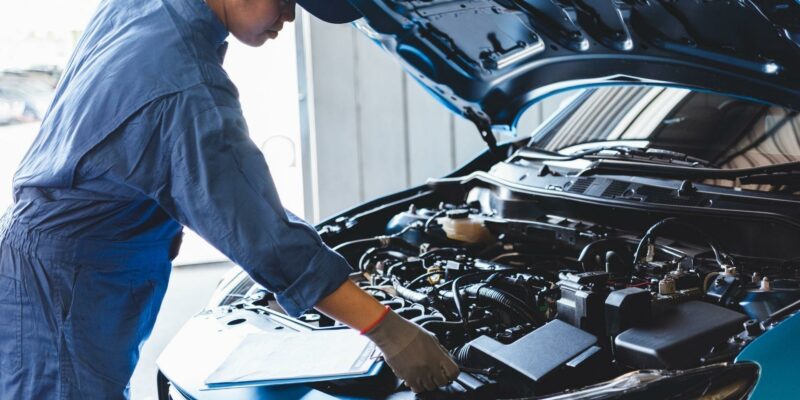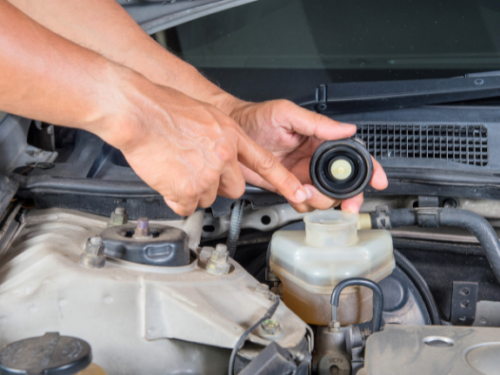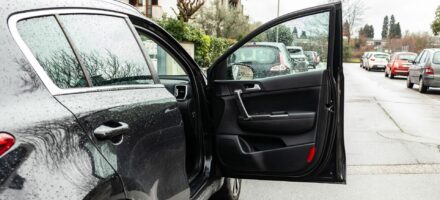
Most major vehicle manufacturers recommend that drivers should change their brake fluid at least every two years or 24,000 miles. This is because brake fluid is a hygroscopic fluid - meaning that it absorbs water over time reducing its effectiveness.
If the fluid is not changed before the water content reaches the 3% mark, the water brings down the normal boiling point of the brake fluid and air bubbles are created as a result. Once this happens, the brakes become ineffective and dangerous.
If that wasn't bad enough, a motorist probably won't even be aware that this has taken place because the braking system will appear completely normal until the brake fluid reaches the reduced boiling point - which usually occurs after braking heavily.
What happens next is this: the brakes take on a sponge-like feeling and don't work - so the car fails to stop. If the driver happens to be on a hill or driving along a motorway when this happens, the consequences don't even bear thinking about.
The only way to ensure that this doesn’t end up happening to you is to check that your brake fluid is changed at least every two years – preferably once a year. If you get your car serviced by a main dealer, this will automatically be checked at regular intervals as part of a service schedule.
Running Out of Brake Fluid

If your brake master cylinder becomes empty, the pedal will go right down onto the floor, you will end up needing to bleed your brakes as well as adding more brake fluid. If you don't know how to do this, or anyone that does, don't take a risk - get a main dealer to do it for you. They will flush out and refill the braking system, making sure that it is up to scratch and roadworthy.
If you do it yourself, make sure that you don't touch your eyes or skin after you've handled brake fluid because it is a very toxic substance. Take great care not to spill any onto the car paint or you might find yourself forking out for a respray.
So How do you Check your Brake Fluid Levels?

It’s really easy, and should only take you a minute. You should do this when you do all your other fluid level checks, so a minimum of once a week.
1. Find your brake master cylinder. Usually, this can be found under the bonnet near the driver side of the car, moving towards the back of the engine. It's only small and is a rectangular metal piece with a reservoir - usually plastic, with a rubber cap that may say something like - 'only use brake fluid'. There should be a couple of small tubes coming from it. It's a good idea to check your manual first to familiarise yourself with it before you go rooting about.
2. If you've got a newer car you might find that you don't need to do much else other than locate the reservoir. On most new cars it's translucent so you can see it and where it's up to in relation to the fill line without taking any more action. Check that the brake fluid goes up to the 'full' line and you're done!
3. With an older car, you might have to take the top off to check the levels as the whole cylinder might be made of metal. If it's held down by a clamp you'll need a screwdriver to take the clamp off and lift up the lid.
4. If it's low, you'll need to add brake fluid so that it rises up to the 'full' line. Make sure you use the right brake fluid for your car - again refer to your owner’s manual because there are lots of different types for different car systems.
Above all don’t take any chances. Effective and well-functioning brakes are the difference between you stopping and not stopping in an emergency, so it’s just not worth taking the risk.
You Might Also Like
Money Talk: HP & PCP Car Finance Deals Explained
8 Essential Tips For Buying A Car Online
Minor Car Modifications That Do And Don’t Affect Car Insurance
Visit our YouTube channel where you can find car reviews and expert advice.
Disclaimer: The information in the article is for general purpose information only and should not be constituted as legal advice. This article has been produced by a third party and Jardine Motors does not take any responsibility for the completeness, accuracy, or reliability with respect to the website or the information provided. Article last updated April 2016.



